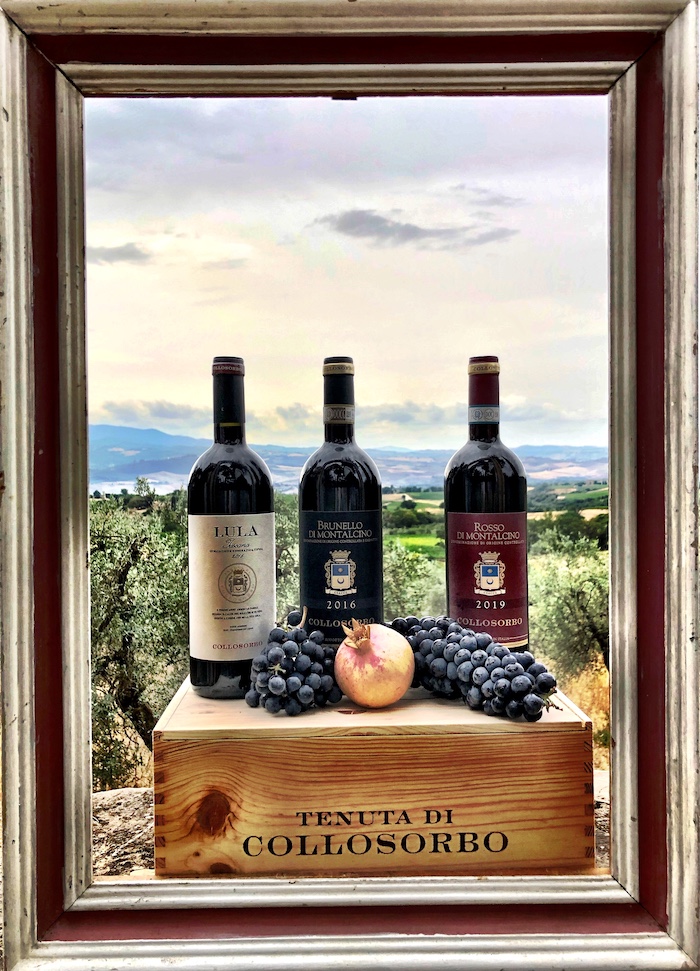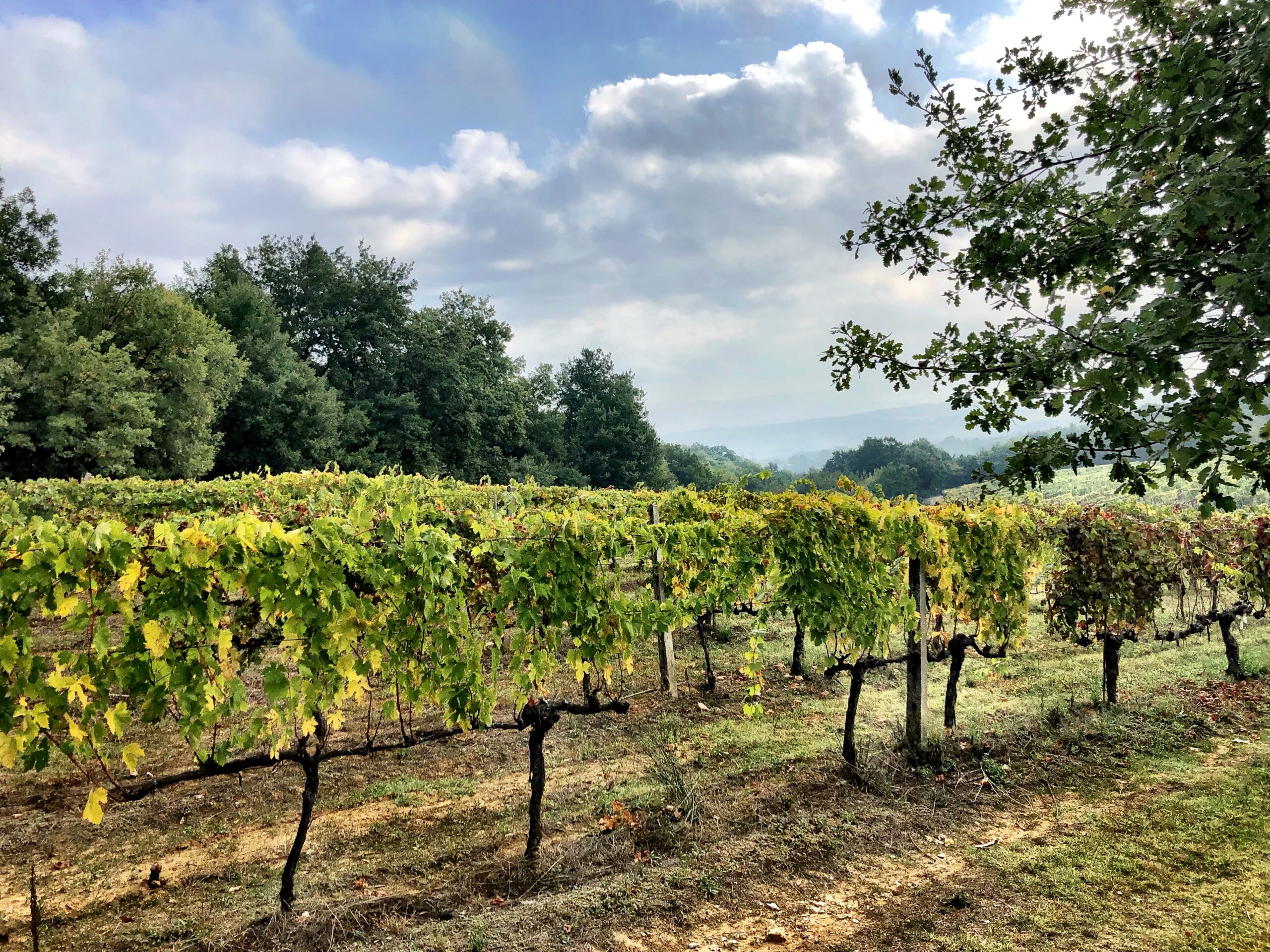This week…
“Balsamic aromas of camphor and cedar align with ripe plum, underbrush and new leather in this full-bodied red. On the concentrated, enveloping palate, tightly knit, fine-grained tannins accompany ripe Marasca cherry, blood orange, vanilla and licorice before a tobacco close. Fresh acidity lifts the dense richness.”
Thus does Wine enthusiast describe the Collosorbo Brunello (2016) we currently have featured for sale on Uncork Italy and which was just awarded 100 points! It’s absolutely sensational.
To read all our previous newsletters and see the videos connected to them, click here.
Watch the Video: Into the cellar at collosorbo
In this week’s video we follow the grapes from the field to the sorting table and into the cellar where Laura explains the three styles of fermentation they use at Collosorbo to turn the strong Sangiovese grape into their signature smooth, full bodied wines.
Some technical terms
Maceration: Maceration is the process where the phenolic materials of the grape tannins, colouring agents, (anthocyanin) and flavour compounds are leached from the grape skins, seeds and stems into the must. In other words, where the smooshed grapes hang out in tanks transmitting their flavour and tannins into the liquid that will become wine.
Tannins: What so many people consider a bad word in wine but which is absolutely essential for structure and elegance in a great wine! The tannins are what dry out your mouth when you drink wine. To be sure, too much tannin is a bad thing. But too little gives you alcoholic grape juice. Tannins are found in the skin of the grape so it’s in this phase of wine making that they develop and when the enologist has to be careful in how the newborn wine is processed so it doesn’t come out with too many strong tannins but maintains a soft, well rounded structure.
Cru: As much as it pains us to use a French term in an Italian wine cellar, the French, as always, set the gold standard… at least in terminology. The Cru indicates a high quality part of the vineyard on a winemaker’s estate. A section with the best vines, the best sun exposure, the best soil.
Natural Yeast: A few times Laura mentions that they don’t add yeast to the maceration but just allow the yeast already present on the grape skins to do its work.
Life of an Enologist at Collosorbo
After a summer among the vines, we are heading into the cellar where Laura explains three styles of vinification they do at Collosorbo. Here’s the breakdown of what she explains:
1. Pump-over technique: Laura refers to the “pump over” method and says they never use “punch down.” While all the grapes are hanging out in the tank, you want the liquid and the skins to come into contact but she mentions that it’s important not to agitate the skins too much. Remember, we’re talking about Sangiovese here so the skins are full of powerful tannins and flavours that if released too quickly and in too high quantities can create a harsh, tannic wine, which they don’t want. The “pump over” method disturbs the skins less and creates a smoother wine.
2. Pre-maceration: The second method, also done in stainless steel tanks keeps the grapes in continual motion at a cooler temperature (10 C / 50 F) for 2 to 3 days. This is another softer way to extract tannins and flavour without overdoing it. After this process, they increase the temperature which stimulates the yeast to get to work turning sugar to alcohol.
3. Barrels: And the last method is the slowest, occurring entirely in large oak tonneau barrels in which they don’t touch the cap at all but just wet it occasionally with some wine from the bottom of the barrel. This entire process is much softer and therefore takes longer – 30-40 days! This wine will become the special Brunello cru – something not yet released on the market. You saw it first on Uncork Italy 🙂
From here…
Now it’s into the barrels for the ageing process! Something we hope to show you in the new year with Uncork Italy Season 2.
Want to try the wine?
You can buy wine directly from all five the producers we’ve featured in the last year. We offer discounts to buy through us and, in the case of some of these producers, they do not yet even sell their wine in the US making us the only way to buy their wine direct without coming to Italy (though we recommend that too!).

